That video is from March 13, 2022 - that’s almost exactly a year ago. Currently, in 2023, we have more snow than we did at this time in 2022 and it’s not going anywhere. At least not for a few more weeks.
If you remember, winter started off with a bang in early November giving us 36” in 36 hours. From there, it’s continued to build, melting occasionally and compacting in the sun only to refreeze, layer upon layer. Right now, we have about 3 feet of hardpacked snow all around us.
In some places, it’s not so hardpacked anymore, as you can see from the video. When it starts melting, life gets interesting.
John uses the snow-blower to keep wide swaths clear around the house so we can get to the chicken coop, the barn, and the solar panels relatively easily.
He keeps the drive down to our gate pretty clear, too, so we can use the snowmobile to go into town. I stress, it’s very important to be able to get out when you need to!
One of our trailcams caught us taking Henry to the vet after he broke a bone in his foot. I rode in the sled with him to keep him from jumping out and, as you can see, he must think I’m hurt because he’s licking me! What a sweetheart.
He’s totally healed, by the way.
Yesterday, we went into town only to be mocked by the packed aisles of garden tools, seed packets and rows of John Deere mowers. There’s a difference of about 2500 feet in elevation between our home and town.
Visiting town, where things are green and sprouting, gives me ants in my pants for spring.
Meanwhile, as I anxiously twiddle my thumbs, I’ve been honing my sewing skills, canning meats, and baking. John is keeping busy, too. He’s redesigning all of our closets and pantries, clearing them out, painting them, and making custom shelving… We continue to make things nicer bit by bit.
Watching the snow melt is like watching paint dry so John and I have had a lot of time to chat about what worked and what didn’t work this winter.
For instance, the trellis John built last spring is still standing strong after having been completely dumped on since November. It suffered a major crack, though, when a thick sheet of ice came sliding off the roof in one giant chunk.
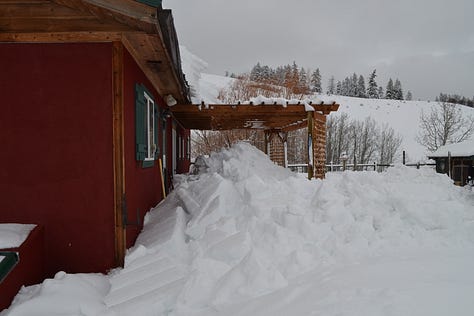

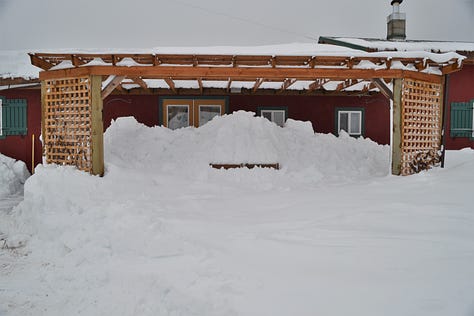
John built it spacing the cross-slats at 12” apart. We thought that’d be enough for the snow to fall through - boy, were we wrong! After our first avalanche, we ended up removing some of the cross-slats and chopping at the snow with a shovel to prevent further damage. In the spring, we’ll reinstall the cross-slats, leaving more room between them.
Why didn’t you use roof dams, you ask? Well, we did. Here’s one of the roof dams frozen into the hardpacked ice, sliding off the roof over the kitchen door.
The roof dams got ripped right out, screws and all, along with the roof vents. In the spring, we’ll run the roof vents horizontally through the walls and patch the roof.
The gutters we installed didn’t fare much better.
Last spring, John put up gutters to catch the rain. Ideally, the rain would drain into a barrel to feed the underground cistern that goes to the downstairs toilet tank.
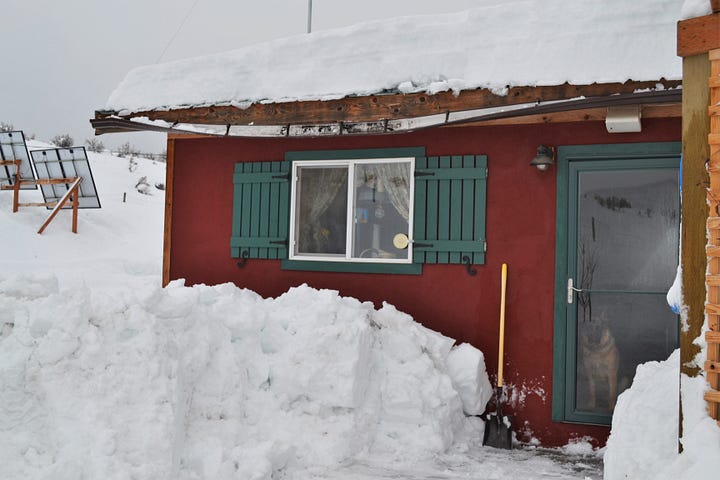
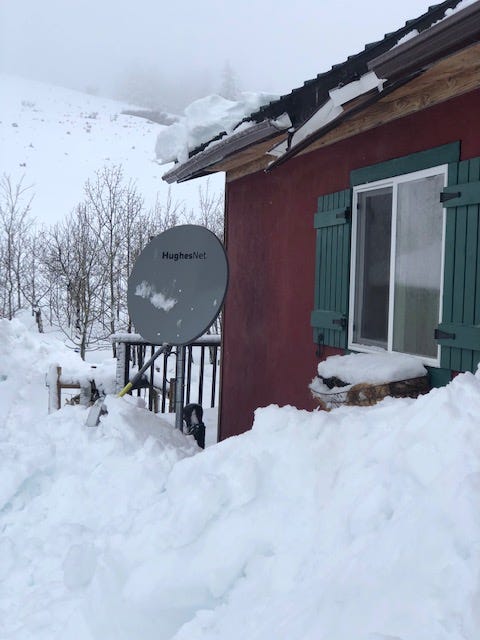
Fortunately, the toilet is still being fed by the cistern which was full before the snow, but it’s obviously not getting any more water right now.
And since we weren’t sure whether gutters would work on our house in the first place, we opted for the cheap ones (about $200), so it wasn’t a great financial loss. We might try lowering the gutters or looking for some that are more narrow in the spring. Still thinking about that one. I guess there’s a reason Alpine chalets are A-frames with steeply sloped roofs!
We learned a lesson about snowmobile maintenance, too. Did you know that snowmobiles have ski slags? We didn’t. About halfway through winter, the snowmobile started pulling hard to the left. Turns out the ski slags were worn slam out.
John’s holding a new slag next to the least damaged one. Needless to say, he replaced both and bought a pair to spare. If you need them, they’re about $90 a pair right now.
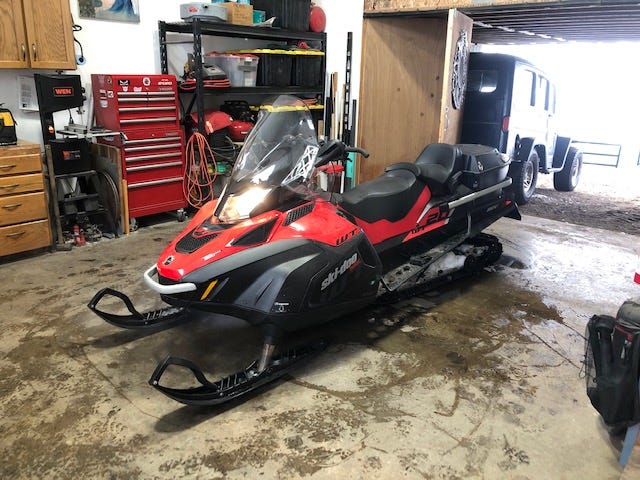
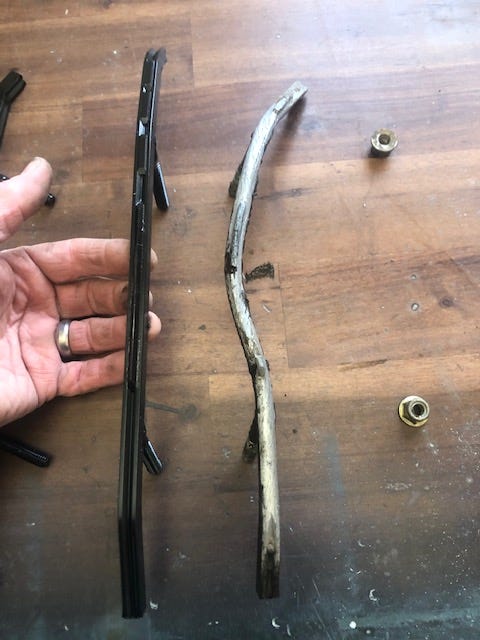
On the property, we learned that the gates we installed at the garden and the main entrance to our property move in winter. John installed gate latches that no longer reach the gate. The weight of the snow pulls on the fencing and the distance between the posts and gate grows gradually. We’re hoping it goes back to normal as the weather warms. For now, we’re using a cable bike lock on the front gate to keep it closed. While some locks (like a Masterlock) will freeze in winter, these don’t.
On the subject of things moving, we also noticed that the doors and windows of our chicken coop got really tight. The humidity increases in winter here, so the wood swells. John typically builds things very snugly so he’ll have to adjust his thinking and learn to be okay with “gaps”.
And speaking of chickens, when the temps fall below freezing (which is nearly everyday here!), we have to check for eggs every few hours. If the eggs freeze, they crack. Right now, our dogs are having at least one egg a day, so even the eggs that crack don’t go to waste.
Segueing into waste… I can’t get to my compost bin!
While a lot of our scrap can go to the chickens, a lot of it is also going in the trash. For now, I have a lidded bucket in the pantry for egg shells, coffee grounds and such, but it’s getting full. Before next winter, we’ll get a rotating compost barrel to park undercover on the back patio.
Once all of this lovely snow starts to melt, it will really feel like we’ve moved into the next season: Mud Season.
One of the reasons we built the porch last spring was to have a “mud-room” for the dogs. The house is never white-glove clean, but I do have limits about the amount of mud and dust I can stand.
The melting snow leaves in its wake muddy puddles all around the exterior of the house, especially by the front door. Last year I wiped Brisket and Henry’s feet with a shop towel before they came in the house, but Henry is a year older and he’s developed an annoying habit.
After suffering a number of impulsive-puppy injuries (jumping chest-first into the barn wall, slicing his leg open on the cellar door, breaking a toe…), Henry gets really nervous whenever we want to “inspect” part of him - especially his feet. Does he whine or run away? No. He pees. And pees. And pees.
And when we shout, “Henry, nooooo!” he pees some more.
Wiping his feet at this point would only result in having both mud and pee in the house. No thanks. Hopefully, he outgrows this phase.
We built a small flower bed around the outer edge of the porch to catch some of the rain water and reduce the puddle situation. Right now, it’s all buried under snow, but under the snow there are tulips just waiting to burst forth!
I mentioned earlier the importance of being able to get out. Our truck, as you know, is parked about 3 miles from our house. As we travel farther down in elevation, snow-pack turns to deep mud and that’s not ideal for a snowmobile.
Last spring, we bought a used side-by-side (SXS) to bridge the gap. Soon, we’ll have to start using the SXS to get down to the truck but it’ll still be a few weeks before we can make that transition.
So, what did we do right last year that helped us have an easier time in this winter?
We added two solar panels and a wind turbine. As a result, the generator has run less this winter than last. That’s a big savings in propane and generator life.
We installed storm doors on three of our five exterior doors. The added insulation helps, especially when the winds kick up. Since storm doors open out, though, we’ve had to use the other doors (the ones without the storm doors) a few times to get out. We learned that a sudden and deep snow can block storm doors from opening!
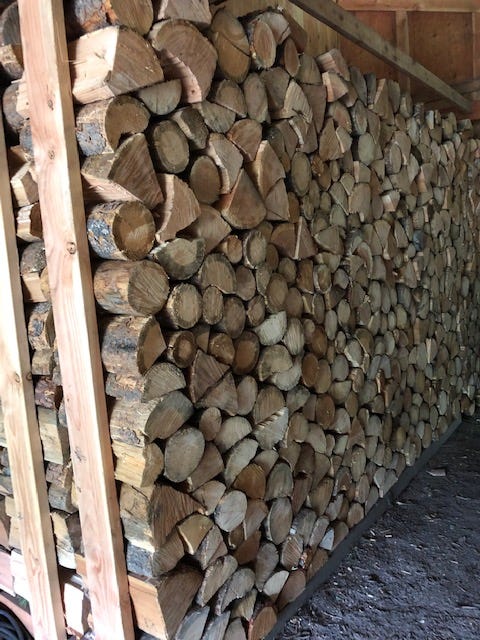

We had (and still have) plenty of food and firewood. That’s not really new, but it’s worth mentioning. The only thing we’ve really needed from the store is cream for coffee, which is more of a luxury than a necessity. We’re still considering buying sheep or a cow… Any thoughts on which?
Another thing that went right - no frozen pipes! Despite the temps dropping to negative 20F for over a week back in December, we had continuous hot and cold running water. That’s an improvement from last winter.
That’s about it for the major issues, and even those aren’t so very major. In 2020, we had a house burn completely to the ground. Something like that will give you perspective. Suffering always does.
“Life is difficult.”
M. Scott Peck, The Road Less Travelled
The understanding that life is going to be difficult can save you a lot of heartache. I don’t know when we, as a society, started to believe that work was a thing to be avoided and the treasures of life should be handed out with our birth certificates.
Anyone who has won a personal battle knows that you only really appreciate a victory that’s cost you something dear. Whether that something was time, energy, sweat, tears or literal blood, we never really value a thing we’ve been handed for free.
When March 20th finally rolls around, I’ll be planting a few vegetables in the greenhouse that I’ve carefully selected (from trial and error!) for their hardiness. Cilantro, spinach, onions and radishes.
Finally, in mid-May, when the weather is mild and the greenhouse is a true “hot house”, I’ll plant basil, tomatoes, peppers and other vegetables that can’t handle anything harsh.
I love all of these vegetables equally, but I admire the hardy ones. They’re the survivors and the ones who endure.
Right now, we have several rows of garlic planted in the field. You’d never know it. They, like everything else, are buried under snow.
We’ve never grown garlic here before, but this place was an organic garlic farm before we bought it, so I have a good feeling. They say garlic is one of the best foods you can eat. It boosts your immune system, reduces blood pressure, and balances cholesterol levels, among other things.
“Let food be thy medicine, and medicine be thy food.”
Hippocrates
I like to think that the things we eat become part of us. If that’s true, it behooves us to eat the strongest, most hardy foods we can find - particularly during the harshest seasons. I want to become more helpful, like my garlic. A little spicier, like my radishes, and sweeter like a multi-layered Walla Walla onion. Eventually, when I’m on my knees planting, I’ll meditate on these things.
For right now, it’s enough to try my darnedest just to be patient, like a snow covered tulip…



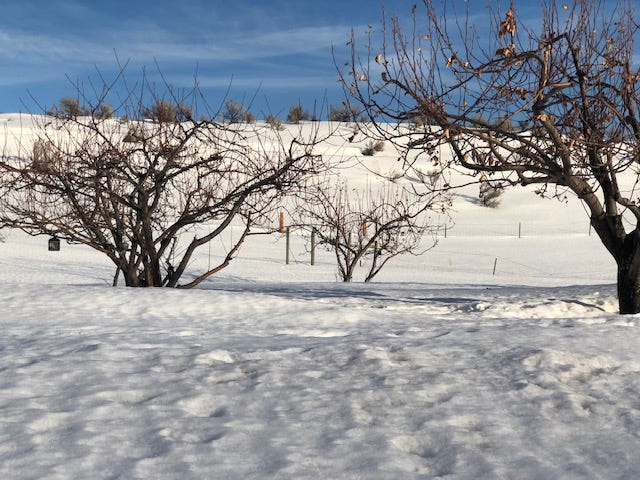
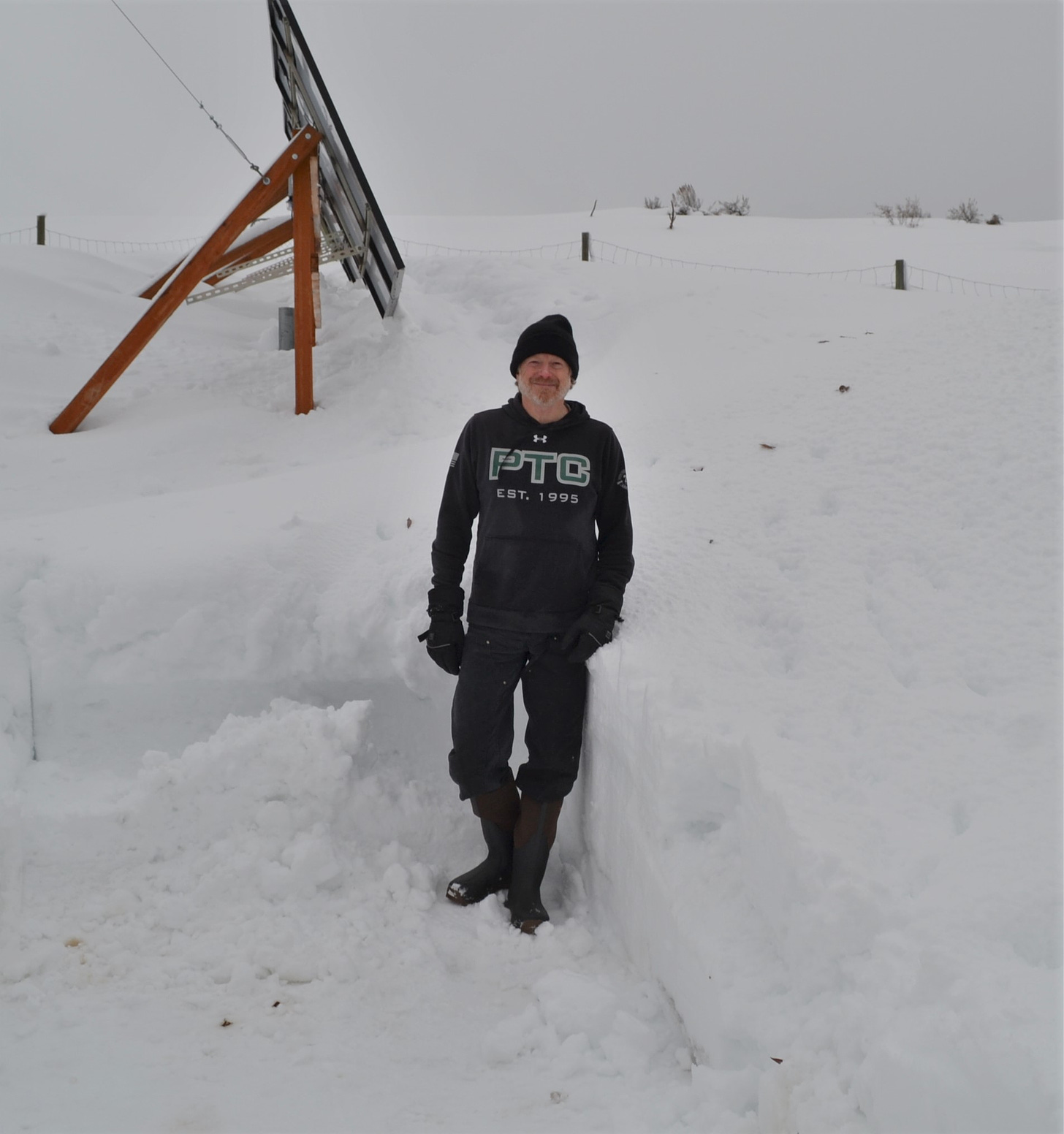
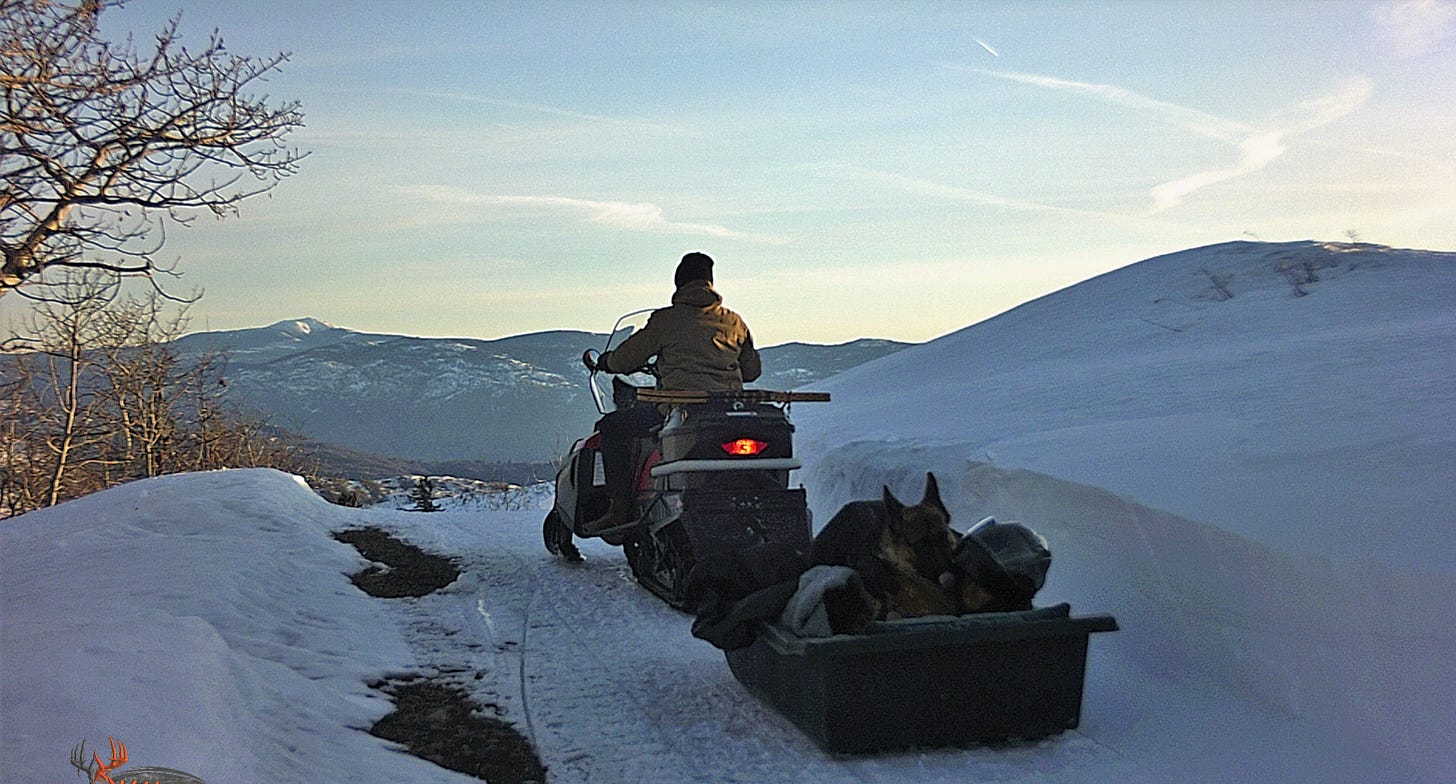

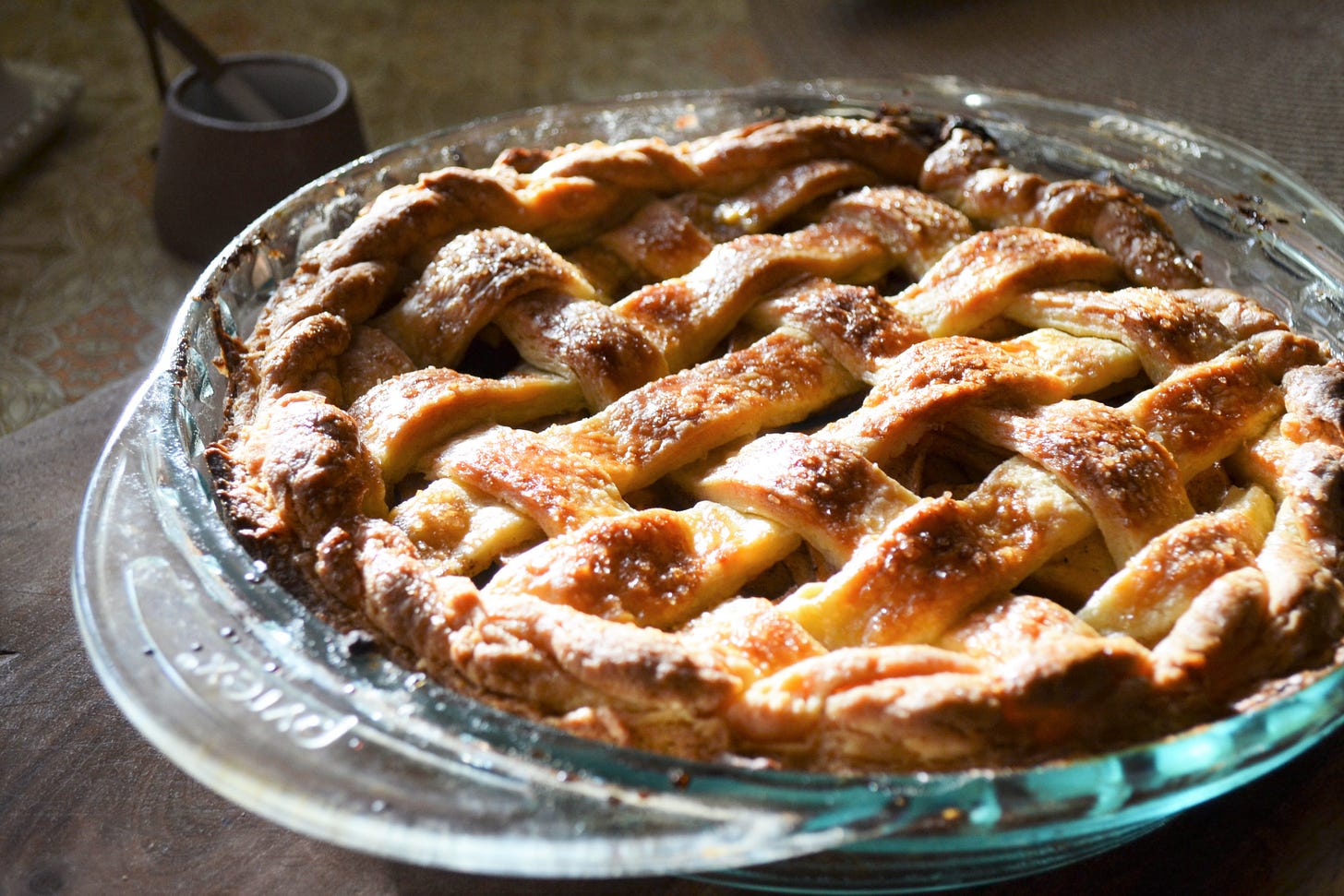
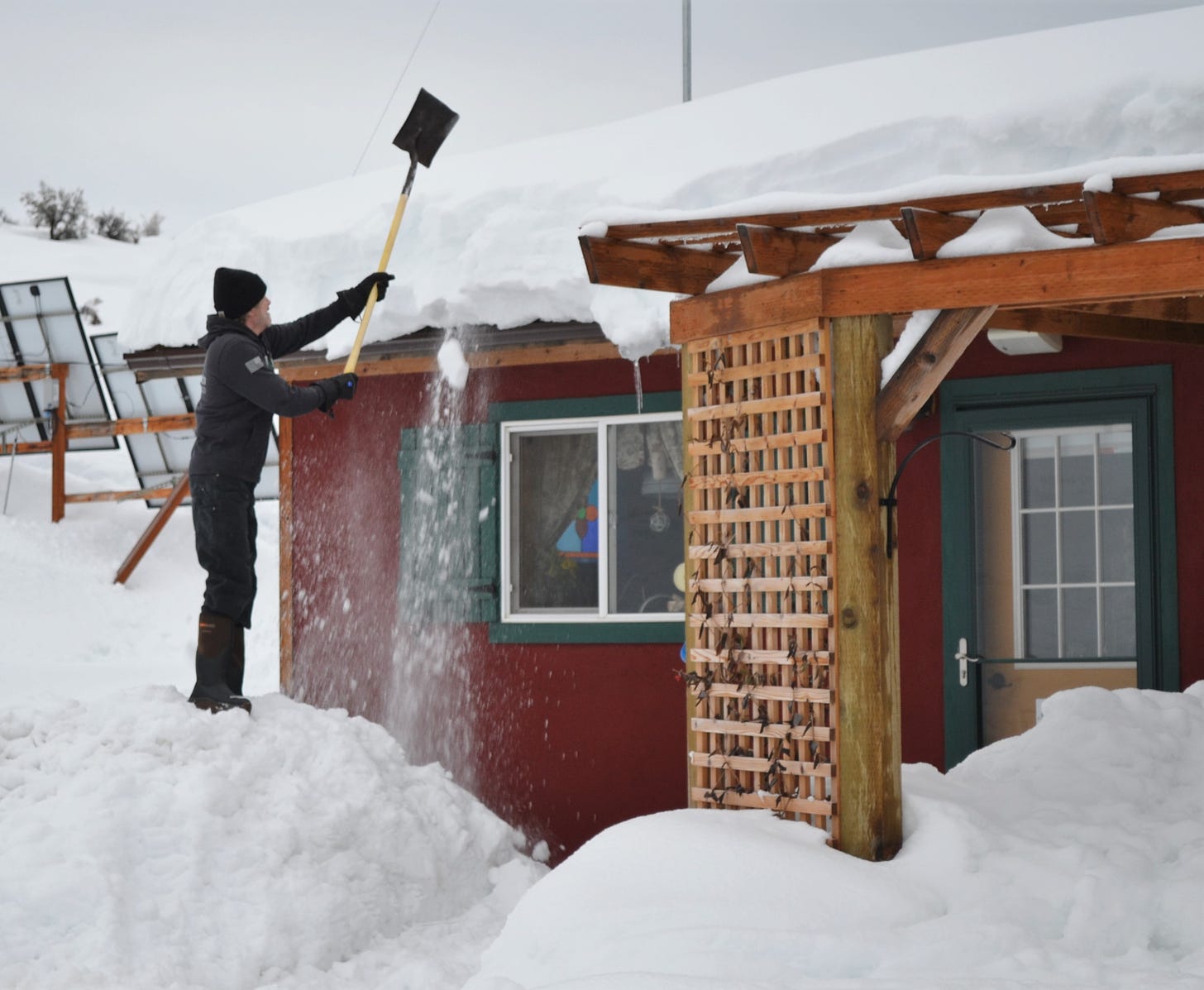

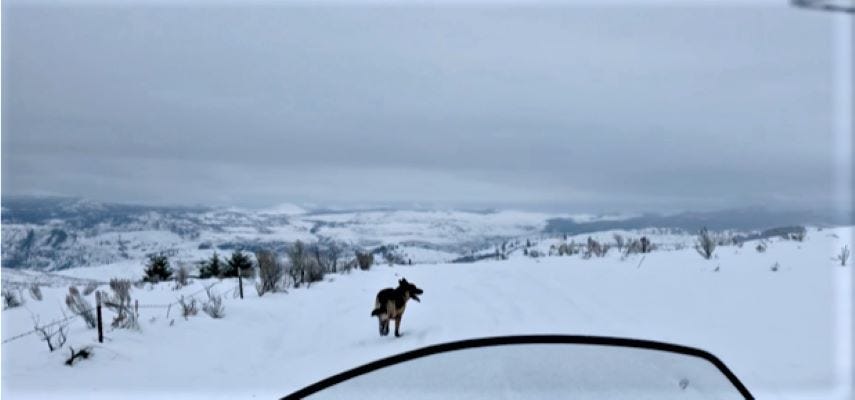
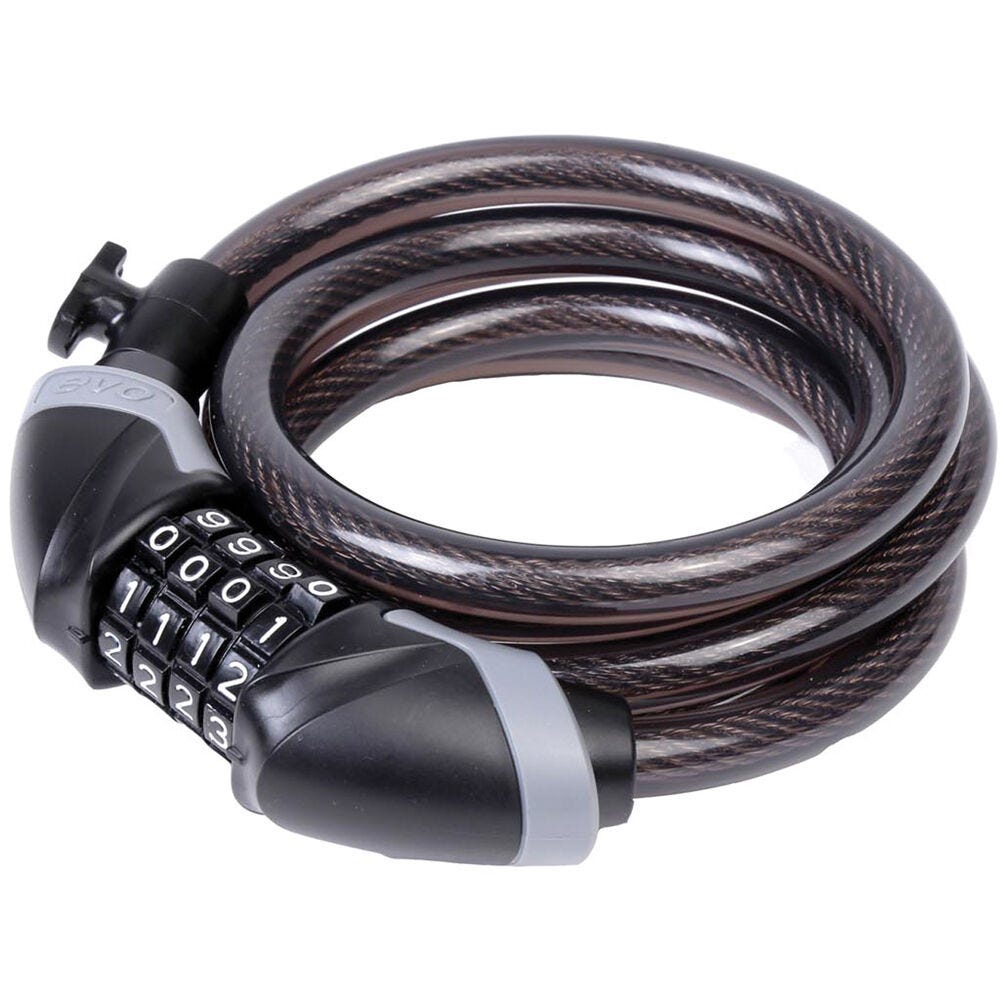
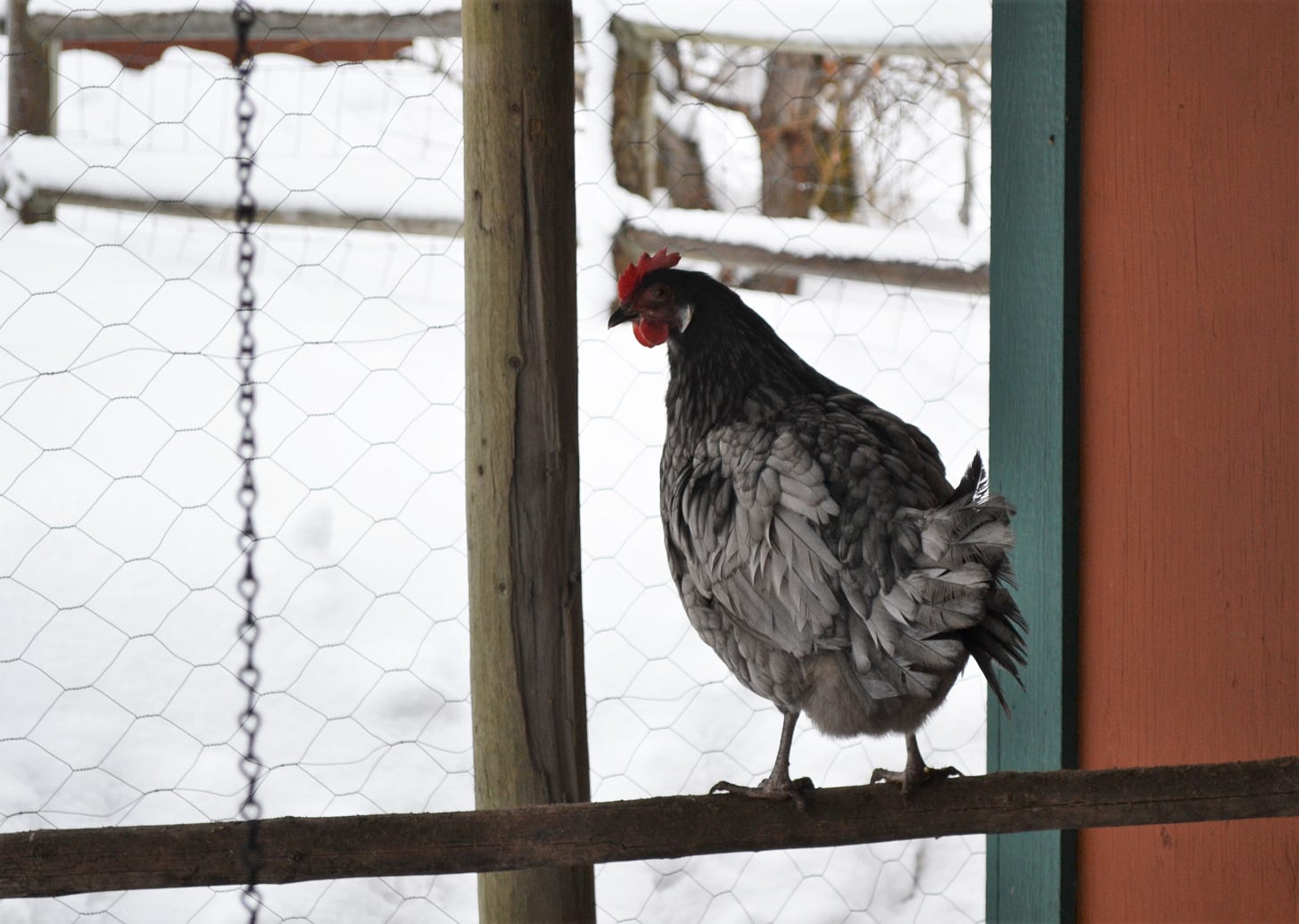
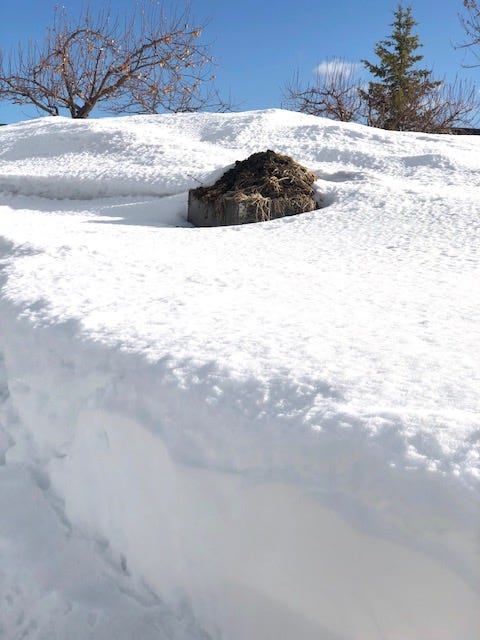
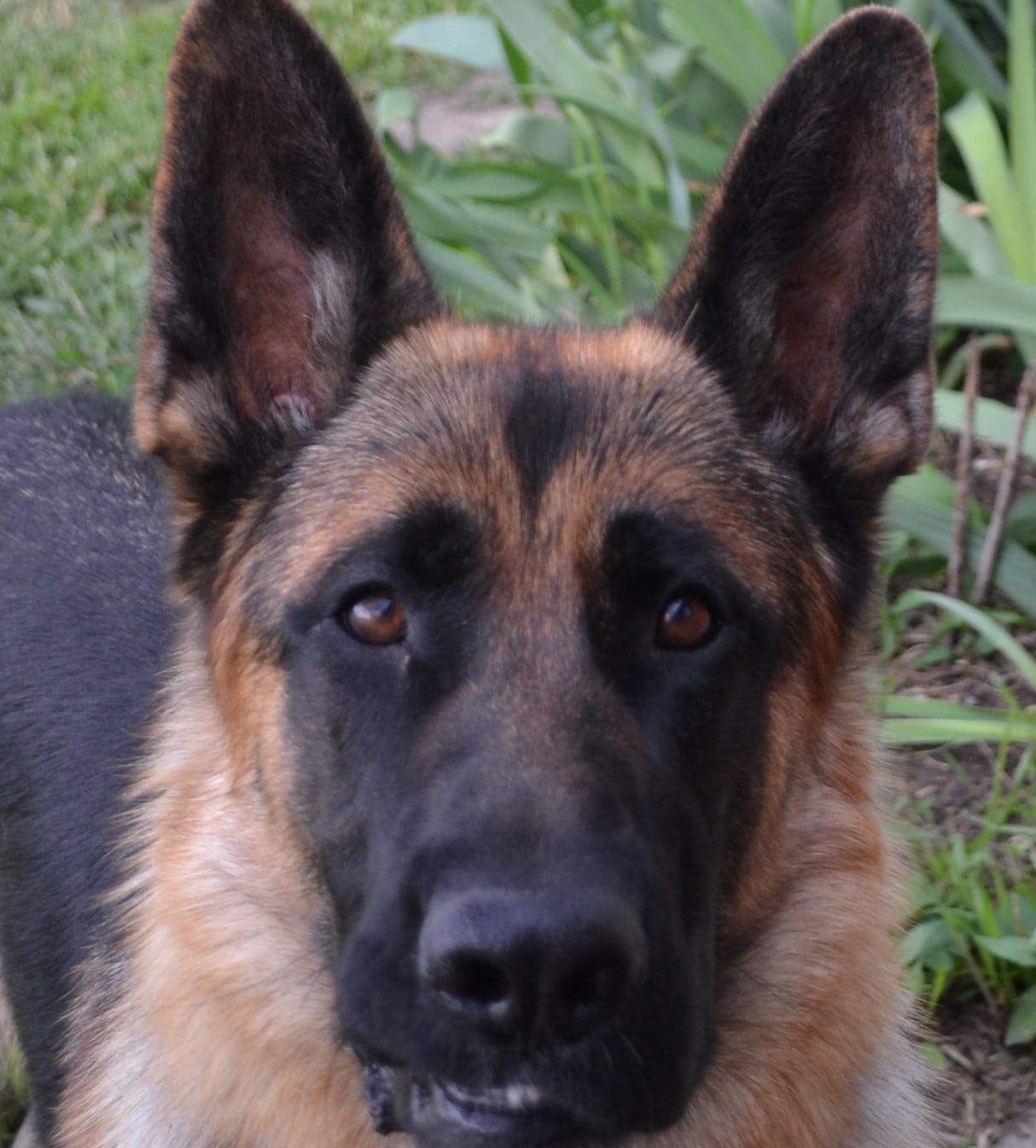
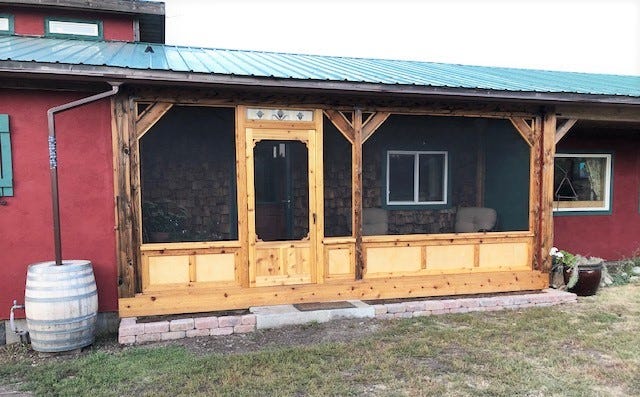


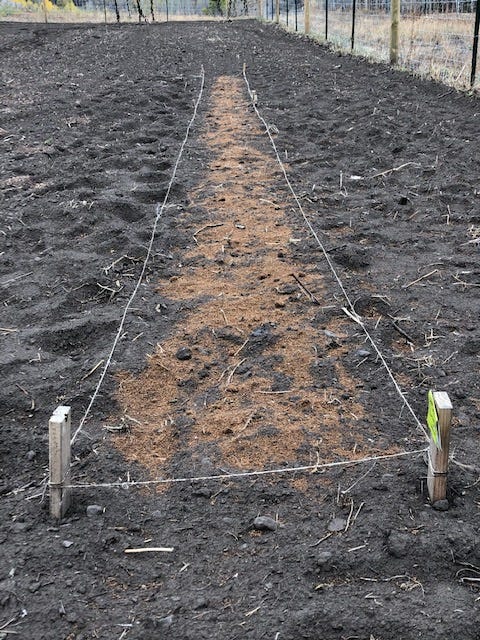
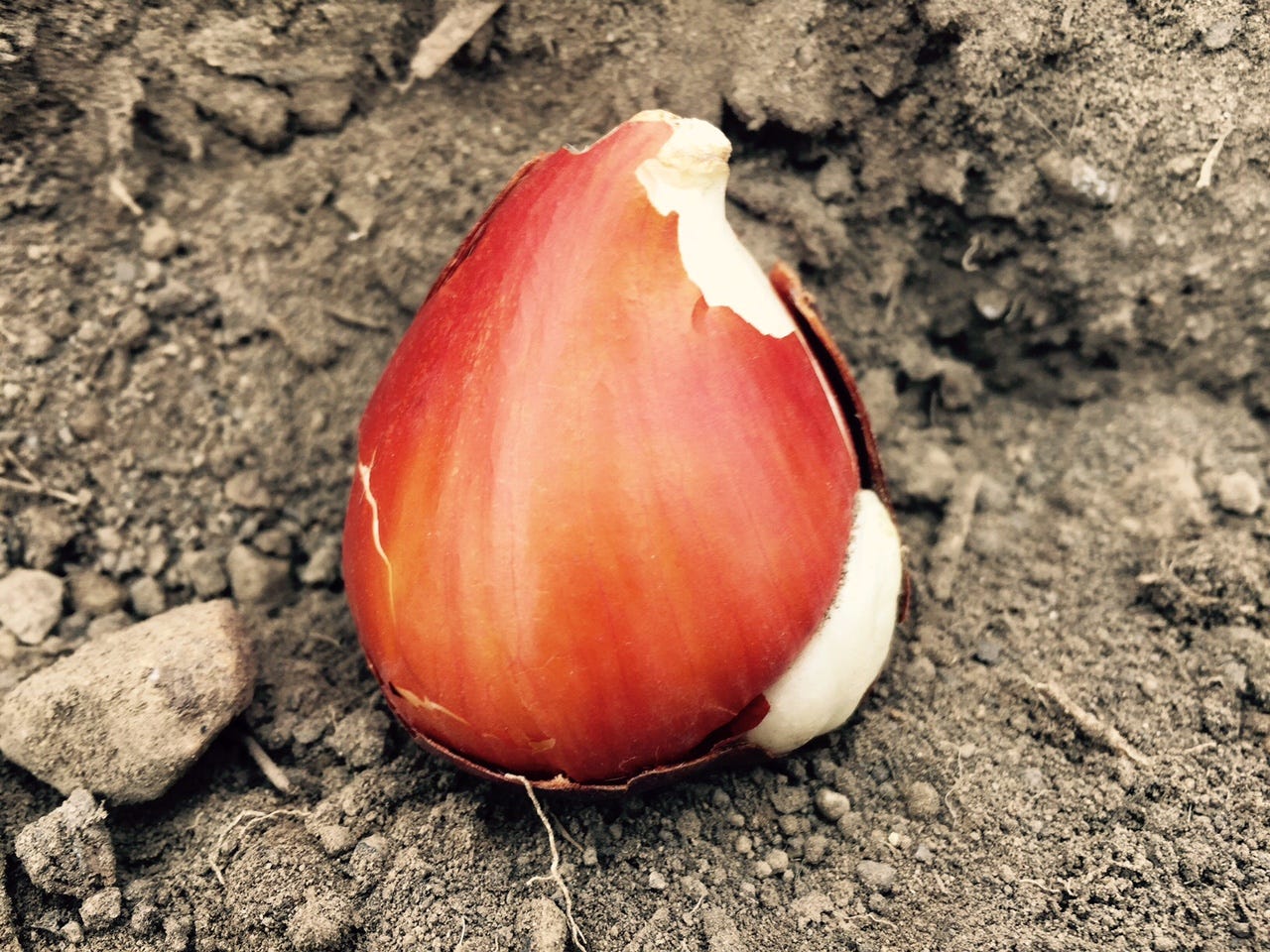


We're not Planting a Garden...